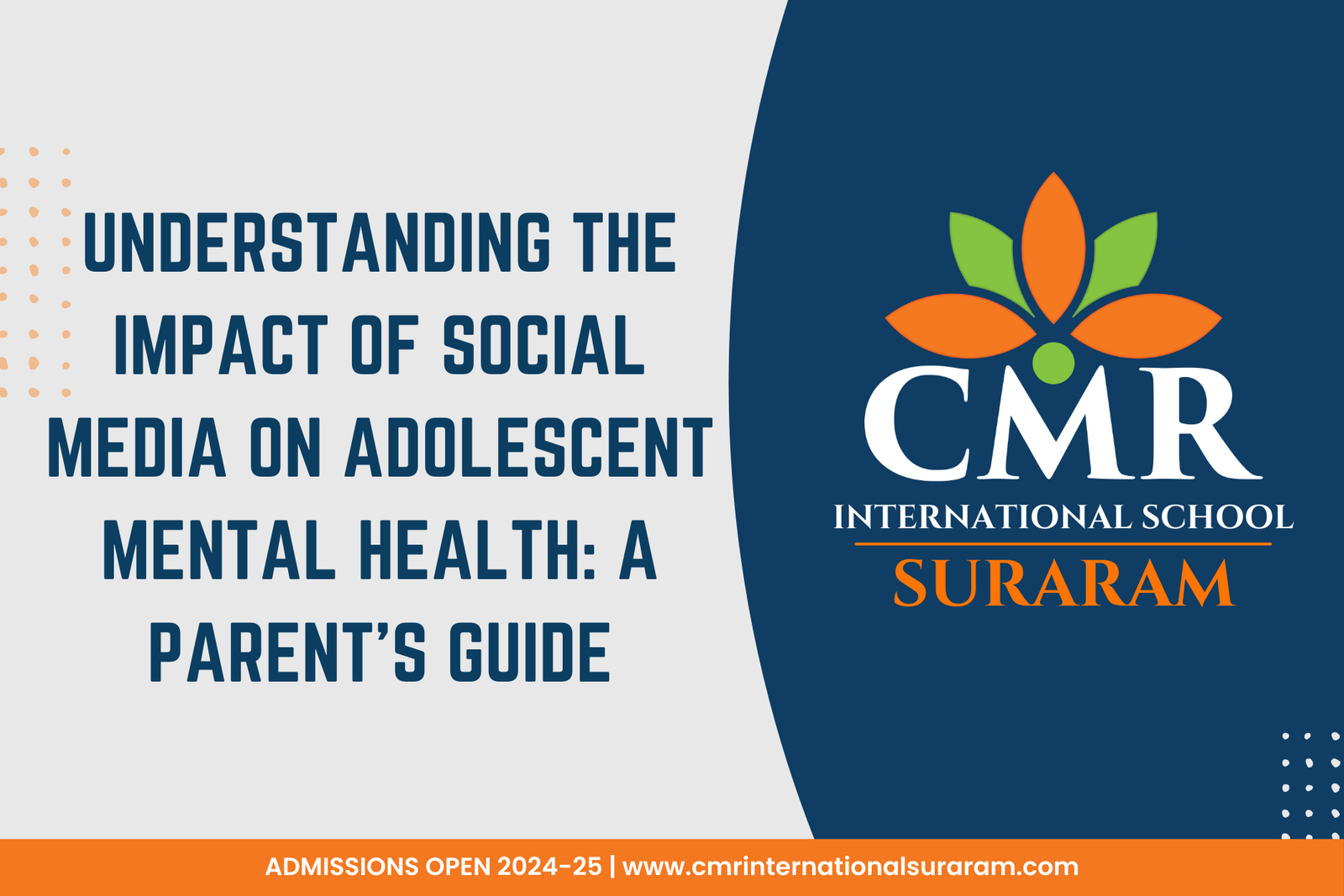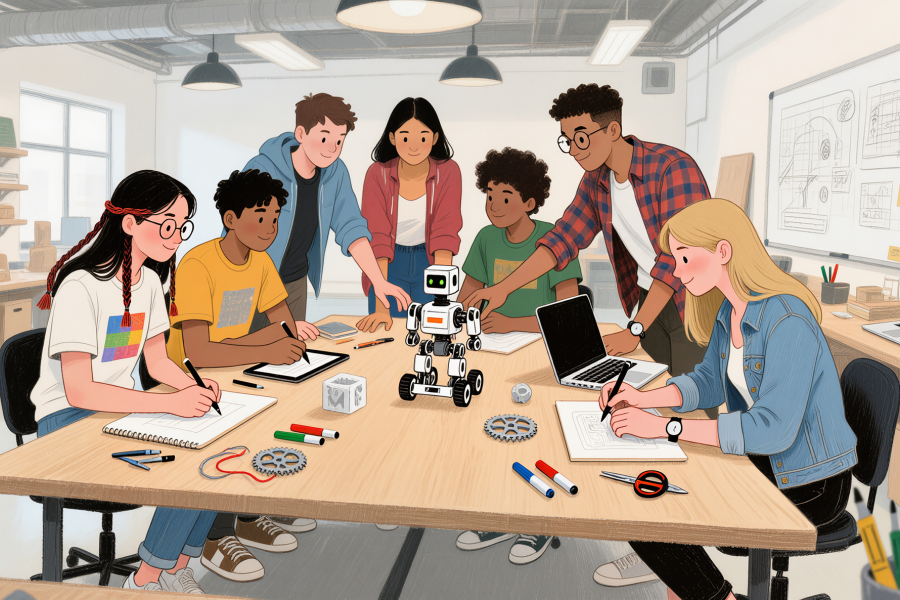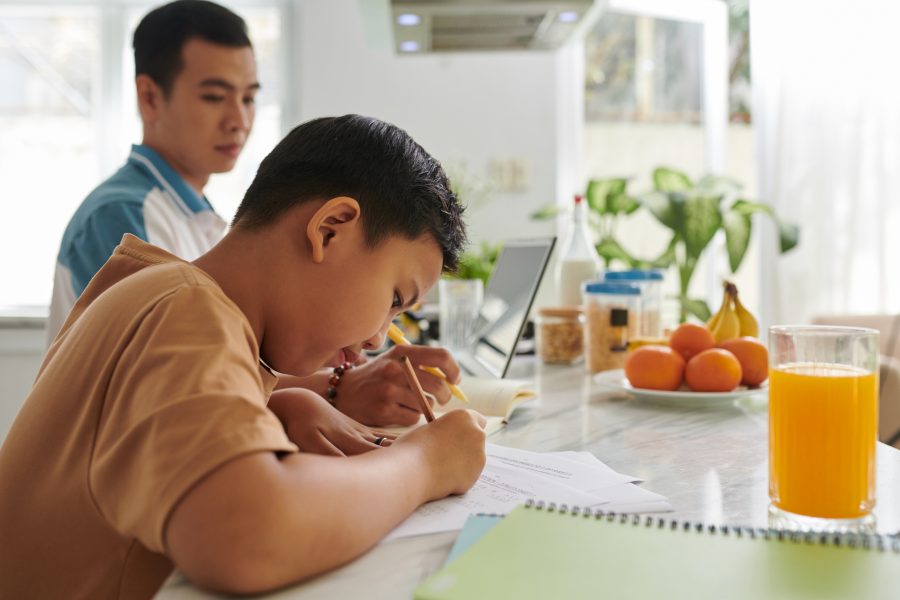Introduction
We live in a world where social media is as common as morning tea. While it keeps us connected and informed, it has also opened a new chapter in parenting—understanding how platforms like Instagram, Snapchat, and YouTube affect our children, especially teenagers. At CMR International School, Suraram, we believe that nurturing young minds is not limited to academics. It’s about guiding them through life’s complexities—and social media is one of them.
As the Best CBSE School in Suraram, we’ve seen how digital experiences influence students emotionally and mentally. This article is a heartfelt guide for parents, filled with real insights, tips, and strategies to support your adolescent’s mental health in this screen-filled era.
1. The Rise of Social Media in Teen Lives
Gone are the days of long telephone calls and handwritten letters. Today’s teens are digital natives—born into a world where Instagram stories and WhatsApp groups are part of daily communication. By age 13, most children have access to one or more social media platforms. It’s not just entertainment; it’s how they socialize, express themselves, and explore the world.
2. Why Are Teens So Drawn to Social Media?
Think of social media like a giant playground where everyone’s invited. Teens crave connection, validation, and a sense of belonging—all of which social media promises in the form of likes, comments, and followers. It’s their way of building identity and self-image during a phase of life that’s already confusing and intense.
3. The Double-Edged Sword: Pros and Cons
Like fire, social media can cook your food or burn your house. It’s not all bad. There are positives:
- Creative Expression: Platforms like TikTok and YouTube allow teens to share their talents.
- Social Learning: Exposure to cultures, trends, and current affairs helps broaden perspectives.
- Community: Teens with niche interests can find like-minded peers.
But the negatives can’t be ignored:
- Addiction and Obsession
- Cyberbullying
- Distorted Body Image
- Unrealistic Life Comparisons
4. The Mental Health Connection
Research shows a direct link between excessive social media use and increased anxiety, depression, and loneliness among adolescents. Why? Because they often measure their worth based on virtual engagement. A post without likes can feel like a personal failure.
At CMR International School, Suraram, we’ve noticed that students glued to screens tend to struggle more with focus, motivation, and emotional stability.
5. Signs Your Child Might Be Struggling
Worried your child might be under social media stress? Look out for:
- Sudden mood changes
- Avoiding real-life social interactions
- Obsessing over online feedback
- Irritability when screen time is reduced
- Lack of interest in schoolwork or hobbies
These may be subtle signs, but they speak volumes if observed consistently.
6. Cyberbullying and Online Harassment
One cruel comment online can hurt more than ten spoken words. Cyberbullying is rampant—and dangerous. Teenagers often don’t report it for fear of embarrassment. As parents, creating a safe, non-judgmental space for open communication is crucial.
7. Social Comparison and Low Self-Esteem
Scrolling through curated, filtered images of “perfect” lives makes teens feel like their real world isn’t good enough. This constant social comparison chips away at self-esteem. Remind them often: what they see online is a highlight reel, not reality.
8. FOMO: The Silent Stressor
Fear of Missing Out—FOMO—is that uneasy feeling when your child sees others attending parties, achieving milestones, or living seemingly ‘better’ lives. It can lead to anxiety, sleeplessness, and even resentment. The fix? Help them appreciate the present instead of envying the projected.
9. Sleep Disruption and Screen Time Overload
Blue light from screens interferes with melatonin, making it harder for teens to fall asleep. Combine that with constant notifications and you have a recipe for chronic sleep deprivation. Lack of sleep, in turn, affects their mood, focus, and academic performance.
At CMR International School, Suraram, we promote digital curfews as part of our student wellness initiatives.
10. The Role of Parents: Guiding, Not Controlling
Your teenager doesn’t need a screen-police—they need a guide. Be involved without being intrusive. Ask questions like, “What did you enjoy online today?” or “Saw anything upsetting?” These open doors to deeper conversations.
11. Building Digital Resilience at Home
Think of digital resilience as your child’s “immune system” for the internet. It means teaching them how to:
- Handle negative comments
- Know when to log off
- Set personal boundaries
- Reflect critically on what they see
Encourage discussions around social media trends and help them analyze both the good and the bad.
12. Encouraging Real-World Connections
Balance is the key. Schedule regular family time—game nights, nature walks, or just shared meals without phones. Help them find hobbies that involve physical interaction. A child with a strong offline life is less likely to be overly dependent on their online one.
13. Tips from CMR International School Experts
At CMR International School, Suraram, we address digital wellbeing through:
- Workshops on Cyber Safety
- Counselling Support for Students
- Parent Engagement Programs
- Mindfulness and Yoga Sessions
- Digital Detox Days
We believe in preparing students for the digital world, not protecting them from it blindly.
14. Creating a Healthy Social Media Routine
Here’s a basic framework to guide screen time:
- No screens 1 hour before bed
- Device-free meals
- Use apps like “Google Family Link” to set limits
- Encourage mindful scrolling—quality over quantity
- Follow inspirational and educational accounts together
Routines are more effective when followed as a family.
15. When to Seek Professional Help
If your child shows ongoing signs of distress—like persistent sadness, withdrawal, or harmful behaviors—don’t hesitate to consult a mental health professional. Counseling isn’t a sign of weakness. It’s an investment in long-term emotional well-being.
Conclusion: A Call for Connection
Social media isn’t the villain; disconnection is. The more we stay emotionally connected with our teens, the easier it becomes to help them navigate their digital lives. Parenting in the digital age is challenging, yes—but it’s also an opportunity to grow together.
At CMR International School, Suraram, we stand with parents in this journey. We’re more than an educational institution; we’re a family that cares.
FAQs
1. How much screen time is too much for my teenager?
The American Academy of Pediatrics recommends no more than 2 hours of recreational screen time per day. Balance is more important than the number—focus on what they’re watching and how it makes them feel.
2. How can I talk to my teen about their social media use without sounding controlling?
Start with curiosity, not criticism. Ask open-ended questions and share your own experiences with technology. Make it a conversation, not a confrontation.
3. What should I do if I suspect my child is being cyberbullied?
Stay calm, listen, and assure them they’re not alone. Document the evidence and report it. Encourage them to block the bully and take a break from that platform. Seek professional help if needed.
4. Can deleting social media accounts help improve mental health?
In some cases, yes—especially if platforms are causing stress or harming self-esteem. However, sudden disconnection can lead to withdrawal. Guide them toward a balanced detox instead of a drastic cut-off.
5. How can CMR International School help my child with digital wellbeing?
As the Best CBSE School in Suraram, we offer counselling, digital literacy sessions, and emotional support systems designed to help students understand and manage their online presence wisely and safely.



